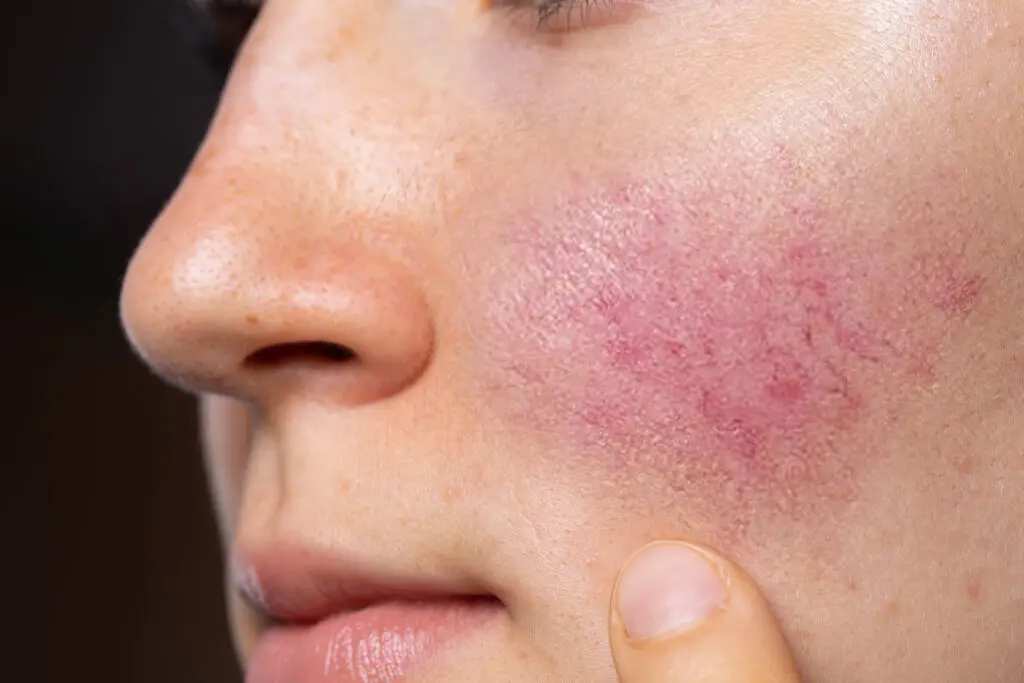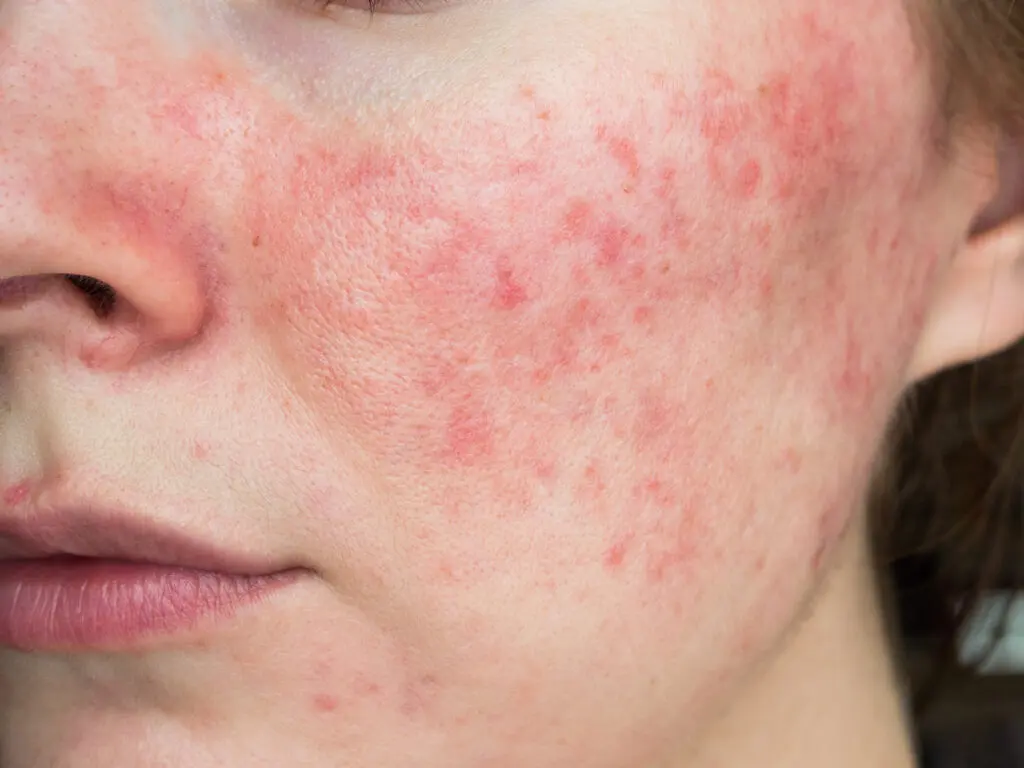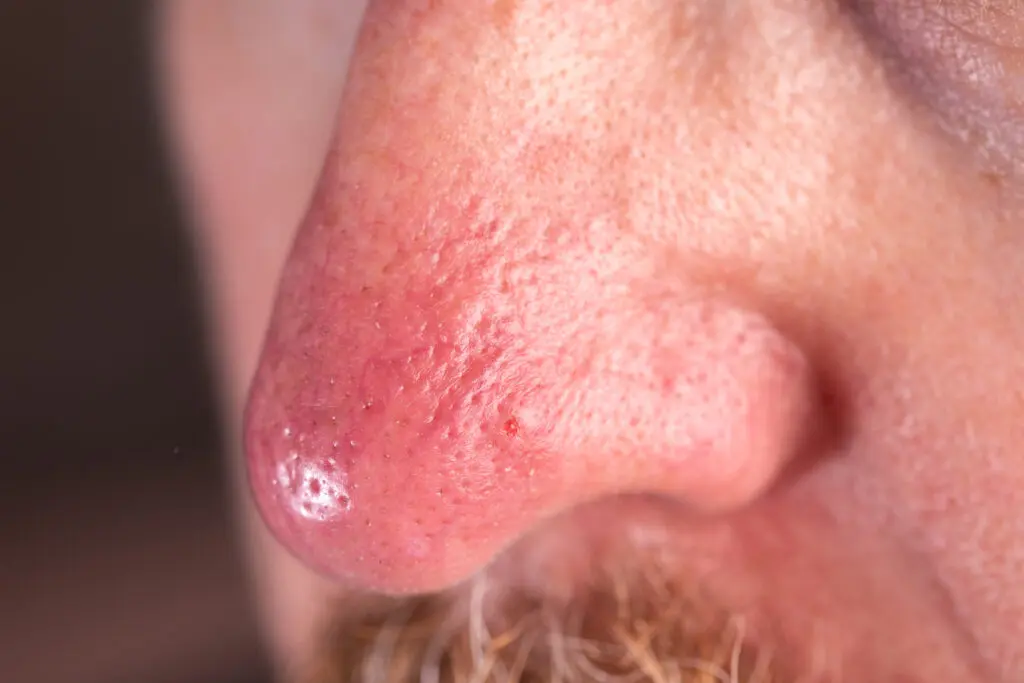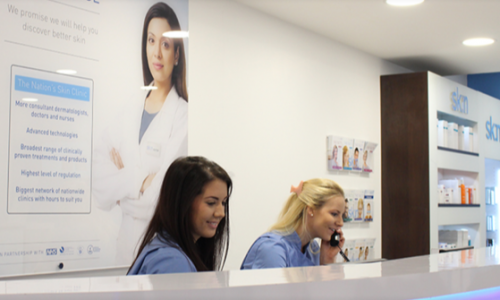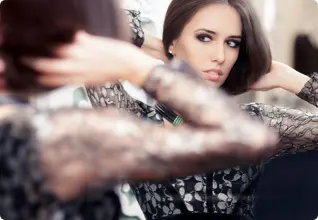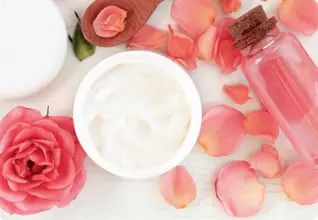What are the different types of rosacea and how can they be treated?
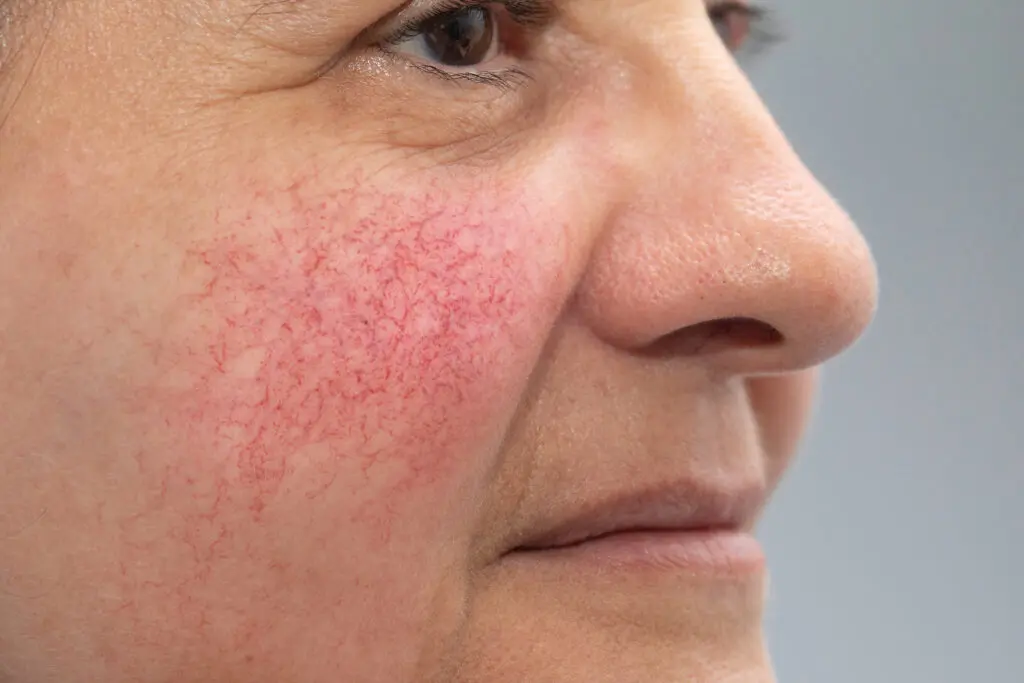
Medically Reviewed June 2023, by Dr Benedetta Brazzini, for sk:n. Next review due June 2024.
Rosacea is a long-term, chronic skin condition that mainly affects the face, causing facial redness across the cheeks, nose, chin, and forehead. Rosacea is a common condition, primarily affecting women and those with lighter skin, but the symptoms can often be worse when found in men.
Alongside redness, a rosacea rash can cause thread veins, thickening of the skin and excess, bumpy tissue, especially around the nose, as well as papules, pustules and spots.
The cure for rosacea is unknown, but treatment can help to control or minimise the symptoms. Read on to discover the different types of rosacea and their best treatments.
What Are The Four Types Of Rosacea?
Many people are surprised when they discover there are different kinds of rosacea, but understanding the differences between them can help you find the best rosacea treatment.
The four kinds of rosacea are:
- Erythematotelangiectatic Rosacea – Subtype one is identified with redness, flushing, and thread veins.
- Papulopustular Rosacea – Subtype two is often known as acne rosacea, is associated with spots and breakouts.
- Phymatous Rosacea – Subtype three is a rarer form of rosacea linked to thickening of the nose skin, often more commonly found in men.
- Ocular Rosacea – Subtype four usually only affects the eye area.
Many people experience symptoms of more than one type of rosacea, meaning you may experience a mix of symptoms from each kind.
Erythematotelangiectatic Rosacea
Erythematotelangiectatic rosacea, or ETR, is the most common kind of rosacea; it causes redness and blushing across the cheeks, nose, and forehead, though those with ETR may experience redness on their neck, chin, and scalp.
Small blood vessels, or facial veins, become enlarged and visible, which causes the look of redness. If left untreated, these symptoms flare up and then disappear, becoming more persistent and covering more skin.
Sufferers of ETR may also experience warmth, tingling, stinging or swelling in the affected areas, alongside dry, scaly, sensitive skin.
Papulopustular Rosacea
Papulopustular rosacea, often called acne rosacea, is linked to the usual redness and inflammation of ETR, accompanied by the addition of acne-like breakouts; large, painful blemishes that develop deep into the skin.
Pustules are puss-filled blemishes that appear on the forehead, cheeks, and chin, often mistaken for acne. As with other kinds of rosacea, these blemishes develop on the centre of the face, but they may appear on the scalp, neck, chest, and even the shoulders in severe cases.
Those with papulopustular rosacea may also experience extremely dry skin; which can become thick and scaly, turning into rough patches called plaques.
Phymatous Rosacea
Phymatous rosacea causes the thickening of the skin that often begins as small areas with plaques, similar to those with papulopustular rosacea. This can, over time, become extra bumpy and protrude out from the skin.
With a similar texture to scar tissue, those with papulopustular rosacea often develop a condition called rhinophyma, a condition in which the nose becomes bulbous and rough. This happens when the thickening of the skin from phymatous rosacea develops on the nose, causing the skin to build up and create an enlarged appearance.
Phymatous rosacea is more common in men than in women and is often the result of untreated rosacea. This is one of the most severe forms of rosacea, but fortunately, it is less common than the other forms of the condition.
Ocular Rosacea
Ocular rosacea affects the eye and the eye area, causing redness and inflammation inside the eyes, on the eyelids and around the eyes. Those with this condition experience bloodshot eyes, bumps on the eyelids similar to styes, and swelling around the eyes.
The most common symptoms of ocular rosacea are burning, irritated, and watery eyes, similar to the feeling of having dirt within the eye, along with eye dryness and increased eye sensitivity. In extreme cases, patients may experience blurred vision and photosensitivity.
Unfortunately, ocular rosacea is often misdiagnosed, as medical professionals don’t link vision problems with a skin condition affecting the eyes. To accurately differentiate between ocular rosacea as other eye conditions, look for visible blood vessels, both on and around the eyes, and itching, redness, or swelling of the skin around the eyes.
What Are The Causes Of Rosacea?
Identifying the type or types of rosacea you are suffering with is just the first part of a complete diagnosis; talking to a professional to understand which of your everyday habits may be contributing to your symptoms is just as important.
Though it is not known what exactly causes rosacea, many triggers can make the symptoms worse. The most common triggers for rosacea include:
- Alcohol
- Caffeine
- Hot drinks
- Dairy products
- Spicy foods
- Aerobic exercises
- Hot baths
- Hot or cold weather
- Humidity
- Strong winds
- Stress
- Exposure to sunlight
You may also have genetic predispositions to rosacea. Those at a higher risk of developing rosacea include those who:
- Have fair or light skin
- Have parents or close relatives with rosacea
- Are between 30 and 50 years of age
- Are female
- Have blood vessel abnormalities
- Have skin peptides
- Have microscopic mites
- Have helicobacter pylori bacteria
How To Treat Rosacea
If you’re wondering how to get rid of rosacea, then the professional rosacea treatments sk:n clinics offer can help persistent redness and work to visibly reduce the signs of this condition. The best rosacea treatment will depend on your variations of symptoms.
- Laser treatment
Broken blood vessels are often the cause of the redness, our facial vein treatment reduces the appearance of enlarged, damaged, or visible blood vessels. Thread vein removal helps to restore your natural complexion through an intense pulsed light from a handheld laser device. This targets and dissolves any prominent facial blood vessels.
- Chemical peels
Skin peels work to visibly reduce inflammation and redness; they are suitable for sensitive skin and will leave your skin visibly brighter, all whilst encouraging a stronger skin barrier. In addition, chemical peels are a non-invasive treatment both for acne rosacea and uneven pigmentation.
Other treatments for rosacea include oral antibiotics. However, it is best to avoid over-the-counter medications and creams as scented, oil-based and alcohol-based products can often worsen the condition.
Key Takeaways
- Rosacea is a long-term, chronic skin condition that mainly affects the face. Though it is incurable, it can be significantly managed.
- There are four subtypes of rosacea, with many people experiencing a mix of symptoms from each kind.
- Identifying which symptoms of rosacea you suffer from can help you choose the right treatment.
- Understanding your triggers and genetic predispositions can help you reduce a further outbreak.
- Laser treatments, professional skin peels and facials can help to reduce rosacea across the face.
Find your nearest clinic and arrange a consultation with one of our dermatologists for advice on how to manage redness and rosacea.
Related Articles

08
Apr 2024

08
Apr 2024
Request a callback
One of our friendly sk:n advisors will call you to book your consultation.
- More than 450 consultants, doctors, nurses and medical practitioners
- Regulated by the Care Quality Commission, Health Inspectorate Wales and Health Improvement Scotland
- Partner of the NHS
- Rated excellent by our clients on Trustpilot
- Strict safety and care protocols
